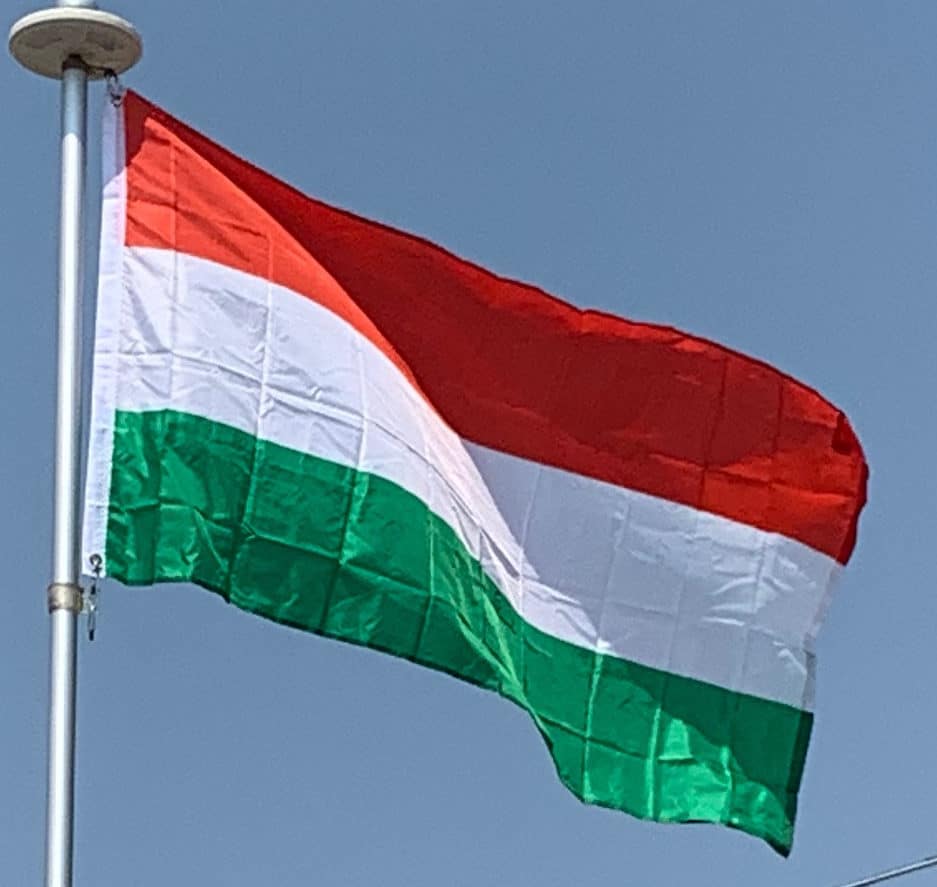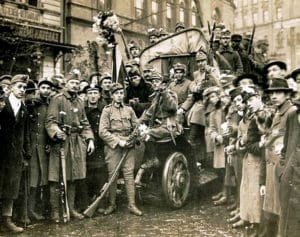
The Hungarian Royal Honvéd army still had more than 1,400,000 soldiers when Mihály Károlyi was announced as prime minister of Hungary. Károlyi yielded to U.S. President Woodrow Wilson’s demand for pacifism by ordering the disarmament of the Hungarian army. This happened under the direction of Béla Linder, minister of war in the Károlyi government. Due to the full disarmament of its army, Hungary was to remain without a national defence at a time of particular vulnerability. During the rule of Károlyi’s pacifist cabinet, Hungary lost the control over approx. 75% of its former pre-WW1 territories (325 411 km²) without fight and was subject to foreign occupation. The Little Entente, sensing an opportunity, invaded the country from three sides—Romania invaded Transylvania, Czechoslovakia annexed Upper Hungary (today’s Slovakia), and a joint Serb-French coalition annexed Vojvodina and other southern regions.
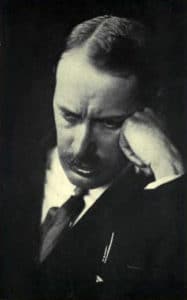
In March 1919, communists led by Béla Kun ousted the Károlyi government and proclaimed the Hungarian Soviet Republic (Tanácsköztársaság), followed by a thorough Red Terror campaign. Despite some successes on the Czechoslovak front, Kun’s forces were ultimately unable to resist the Romanian invasion; by August 1919, Romanian troops occupied Budapest and ousted Kun.
In November 1919, rightist forces led by former Austro-Hungarian admiral Miklós Horthy entered Budapest; exhausted by the war and its aftermath, the populace accepted Horthy’s leadership. In January 1920, parliamentary elections were held and Horthy was proclaimed Regent of the reestablished Kingdom of Hungary, inaugurating the so-called “Horthy era” (Horthy-kor). The new government worked quickly to normalize foreign relations while turning a blind eye to a White Terror that swept through the countryside; extrajudicial killings of suspected communists and Jews lasted well into 1920. On 4 June of that year, the Treaty of Trianon established new borders for Hungary. The country lost 71% of its territory and 66% of its antebellum population, as well as many sources of raw materials and its sole port, Fiume. Though the revision of the Treaty quickly rose to the top of the national political agenda, the Horthy government was not willing to resort to military intervention to do so.
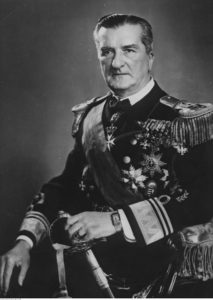
The initial years of the Horthy regime were preoccupied by putsch attempts by Charles IV, the Austro-Hungarian pretender; continued suppression of communists; and a migration crisis triggered by the Trianon territorial changes. Though free elections continued, Horthy’s personality, and those of his personally selected prime ministers, dominated the political scene. The government’s actions continued to drift right with the passage of antisemitic laws and, due to the continued isolation of the Little Entente, economic and then political gravitation toward Italy and Germany. The Great Depression further exacerbated the situation and the popularity of fascist politicians such as Gyula Gömbös and Ferenc Szálasi, promising economic and social recovery, rose.
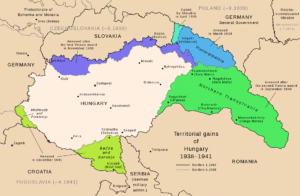
Horthy’s nationalist agenda reached its apogee in 1938 and 1940, when the Nazis rewarded Hungary’s staunchly pro-Germany foreign policy in the First and Second Vienna Awards, respectively, peacefully restoring ethnic-Hungarian-majority areas lost after Trianon. In 1939, Hungary regained further territory from Czechoslovakia through force. Hungary formally joined the Axis Powers on 20 November 1940, and in 1941, participated in the invasion of Yugoslavia, gaining some of its former territories in the south.
World War II 1941–1945:
Hungary formally entered World War II as an Axis Power on 26 June 1941, declaring war on the Soviet Union after unidentified planes bombed Kassa, Munkács, and Rahó. Hungarian troops fought on the Eastern Front for two years. Despite some early successes, the Hungarian government began seeking a secret peace pact with the Allies after the Second Army suffered catastrophic losses at the River Don in January 1943. Learning of the planned defection, German troops occupied Hungary on 19 March 1944 to guarantee Horthy’s compliance. In October, as the Soviet front approached and the Hungarian government made further efforts to disengage from the war, German troops ousted Horthy and installed a puppet government under Szálasi’s fascist Arrow Cross Party. Szálasi pledged all the country’s capabilities in service of the German war machine. By October 1944, the Soviets had reached the river Tisza, and despite some losses, succeeded in encircling and besieging Budapest in December.
